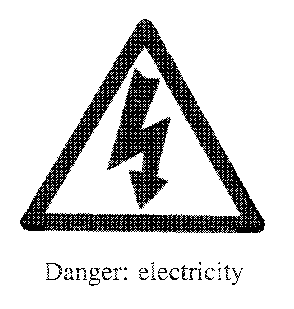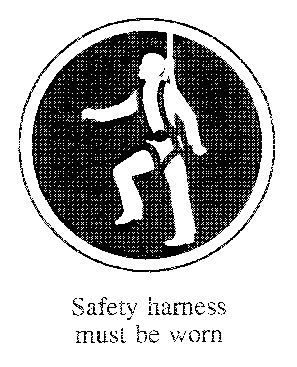PART IIMinimum general requirements concerning signboards
1. Intrinsic features
1.1. The shape and colours of signboards are set out in paragraph 3, in accordance with their specific object (signboards indicating a prohibition, a warning, a mandatory action, an escape route, an emergency or fire-fighting equipment).
1.2. Pictograms must be as simple as possible and should contain only essential details.
1.3. The pictograms used may be slightly different from or more detailed than those shown in paragraph 3, provided that they convey the same meaning and that no difference or adaptation obscures the meaning.
1.4. Signboards are to be made of shock and weather-resistant material suitable for the surrounding environment.
1.5. The dimensions and colorimetric and photometric features of signboards must be such that they can be easily seen and understood.
2. Conditions of use
2.1. Signboards are in principle to be installed at a suitable height and in a position appropriate to the line of sight, taking account of any obstacles, either at the access point to an area in the case of a general hazard, or in the immediate vicinity of a specific hazard or object and in a well-lit and easily accessible and visible location.
Without prejudice to the provisions of Directive 89/654/EEC, phosphorescent colours, reflective materials or artificial lighting should be used where the level of natural light is poor.
2.2. The signboard must be removed when the situation to which it refers ceases to exist.
3. Signboards to be used
3.1. Prohibitory signs
Intrinsic features:
round shape
black pictogram on white background, red edging and diagonal line (the red part to take up at least 35% of the area of the sign).
Signs to be used:
3.2. Warning signs
Intrinsic features:
triangular shape
black pictogram on a yellow background with black edging (the yellow part to take up at least 50% of the area of the sign).
3.3. Mandatory signs
Intrinsic features:
round shape
white pictogram on a blue background (the blue part to take up at least 50% of the area of the sign).
3.4. Emergency escape or first-aid signs
Intrinsic features:
rectangular or square shape
white pictogram on a green background (the green part to take up at least 50% of the area of the sign).
3.5. Fire-fighting signs
Intrinsic features:
rectangular or square shape
white pictogram on a red background (the red part to take up at least 50% of the area of the sign).
In the absence of a specific sign for high temperature.
Pictogram laid down in Council Directive 90/679/EEC of 26 November 1990 on the protection of workers from the risks related to exposure to biological agents at work (Seventh individual Directive within the meaning of Article 16(1) of Directive 89/391/EEC) OJ No. L 374, 31.12.1990, p. 1.
The background to this sign may exceptionally be amber if justified in order to differentiate it from a similar road safety sign.

















































